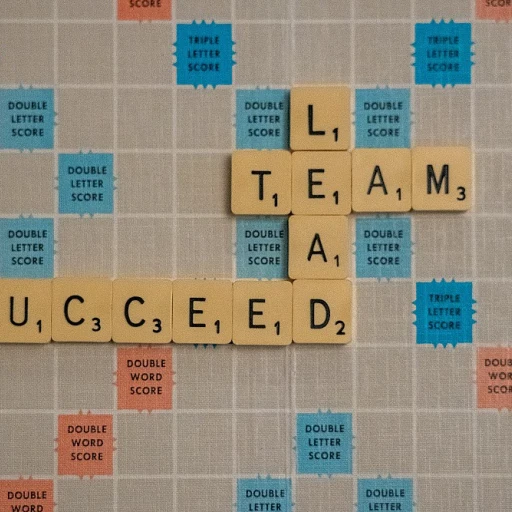
Understanding High Potential Employees
In any organization, recognizing high potential employees is essential for future success. These individuals possess remarkable skills and exhibit qualities that indicate they will excel in their current roles and take on greater responsibilities in the future. As hiring managers and leaders, it’s crucial to identify these top talents early on to nurture their growth and keep them engaged and committed to the company’s objectives.
Identifying the Key Traits of High Potential Employees
High potential employees demonstrate consistent job performance that stands out from their peers. They tend to display a willingness to embrace new tasks and show an eagerness for growth opportunities. Feedback from peers and managers often highlights their adaptability, problem-solving ability, and leadership potential. Employee experience also plays a vital role in their engagement, dictating their willingness to take on new challenges.
Evaluating their skill sets and gauging their readiness to move beyond their existing capabilities is essential. Their capacity to handle workloads effectively while seeking development is a marker of their potential. A successful capacity planning often involves assessing their ability to expand their skills and contribute increasingly to the organization.
These promising employees have a strong desire to contribute meaningfully to the company. By understanding their strengths and providing them with the required growth opportunities, organizations can ensure their employee engagement remains high.
To gain more insights into unlocking the potential of these talented workers, consider the strategies discussed in project shadowing for high potential employees, a resource that highlights empowering methods for fostering their professional development.
Signs Your Talent Needs New Tasks
Recognizing the Need for New Tasks
Identifying when talented employees require new challenges can be pivotal to their job satisfaction and the overall success of the organization. When employees feel stagnant, their performance and engagement often diminish over time, impacting both their current job role and future work within the company. Here are some signs to watch for:
- Diminished enthusiasm or creativity: Employees who thrived on challenges and new ideas may start to show a lack of interest or a decrease in creativity within their work. This decrease is a strong indicator that their current role may not be meeting their skill set and developmental needs.
- Consistent high performance: While consistently high performance is desirable, it might actually signal that an employee has fully mastered their current tasks and skill sets. Without new growth opportunities, even top talent may begin to question their long-term prospects within the organization.
- Requests for more responsibility: When an employee explicitly requests additional tasks or exhibits interest in assuming more responsibility, it's a clear hint that they are ready to explore new challenges. Feedback from hiring managers and performance reviews can confirm this need for growth and skill development.
- Discussion of career goals: During employee meetings, pay attention to any discussions about future ambitions. Employees who continuously discuss their career goals might be signaling their readiness for new challenges that align with their aspirations.
- Productive dissatisfaction: Complaints or dissatisfaction regarding their current role may seem negative at first, but they can actually be constructive feedback about the need for role adaptation. An engaged employee will often seek a solution before considering external job opportunities.
Effectively identifying and addressing these signs can enhance employee experience and strengthen the team’s capacity planning. Providing new and challenging tasks ensures that talented employees maintain their engagement and continue developing their skill sets, ultimately benefiting both the employee and the organization in the long term. Without attention to these signs, there is a risk of talent drain, where essential team members might look for new opportunities elsewhere.
The Impact of Stagnation
Understanding the Consequences of Stalling
Talented employees who face no new challenges often experience the adverse effects of stagnation. When their skills are not constantly honed, these individuals can feel a sense of complacency. Over time, this lack of engagement can dampen job satisfaction, decreasing their overall job performance. Within a company, the impact becomes evident when high performers start delivering the bare minimum, merely coasting along in their current role.
This situation not only affects the employee but can echo across the organization. A manager who fails to recognize this stagnation risks contributing to a culture where performance wanes and top talent begins seeking growth opportunities externally. For the future of the organization, it's crucial to acknowledge these signs of disengagement early on. In examining case studies around addressing this issue, a recurring theme is the importance of timely intervention and providing opportunities that will help reinvigorate an employee's drive.
Moreover, overlooking these signals can have long-term repercussions. An environment where skill sets become stagnant can discourage potential job candidates from joining the company, due to a perceived lack of dynamic future work. Thus, organizations need to proactively manage and revitalize capacity planning efforts to rejuvenate employee experience and keep employees from plateauing in their current roles. Encouraging feedback and ensuring ongoing development is pivotal in preventing the erosion of talent. Embracing policies that support this agenda, like privacy and cookie policies, indirectly fortify the company's commitment to a thriving work culture.
Strategies for Providing New Challenges
Strategies for Redefining Roles and Responsibilities
It's essential to continuously provide new challenges for high potential employees to foster their growth and maintain job satisfaction. Here are some effective strategies to consider:- Start with Skill Assessment: Ascertain your employee's current skill set and identify what new skills can be developed. This understanding helps in designing tasks that are challenging yet achievable. By recognizing these areas, a company can leverage their top talent more effectively.
- Offer Rotational Roles: Encourage your employees to take on different roles within the organization. This broadens their skill sets and provides insight into other facets of the company, enhancing employee engagement and performance over time.
- Implement Project-Based Challenges: Assign specific tasks that require critical thinking, leadership, or specialized skills. Carefully selected projects cater to the high potential employee’s growth potential, increasing both job performance and employee experience.
- Provide Growth Opportunities: Encourage employees to take part in workshops, seminars, or skill development courses. Managers should remain proactive in identifying relevant opportunities to help employees transition into future work roles.
- Foster Autonomy and Innovation: Allow your talent to take ownership of certain projects or tasks. This trust not only boosts morale but also promotes innovation. Employees should feel they have the authority to explore new solutions without fearing repercussions.
Balancing Workload and Development
Balancing Responsibilities with Skill Enhancement
Finding the right balance between an employee's current workload and their development needs is crucial for optimizing job performance and job satisfaction. While it can be tempting for managers to overburden high potential employees with new tasks to exploit their skills fully, it is essential to ensure that the workload remains manageable. Consider the following strategies:
- Capacity Planning: Assess the employee's current role and duties to determine how additional responsibilities might fit into their schedule without overwhelming them. This involves evaluating job candidates’ existing commitments and their potential for productivity.
- Customized Development Plans: Align the employee's growth opportunities with the company's long-term goals. Tailor skill development programs that complement their current role, thereby enhancing their work experience without detracting from their daily tasks.
- Feedback Mechanisms: Implement regular feedback systems to monitor how employees feel about their workload and job satisfaction. Gathering performance feedback can highlight areas where employees excel and where they might benefit from additional support or reduced responsibility.
- Clear Communication: Open dialogue between managers and employees is key. By discussing future work expectations and potential barriers to performance, organizations can better allocate resources effectively. Hiring managers should be transparent about changes to roles to manage employee expectations.
Balancing the work required for day-to-day operations and the need for personal and professional growth ensures employees remain engaged and motivated. This not only contributes to an enhanced employee experience but also promotes a productive and positive organizational culture where high potential employees can thrive and develop their skill sets for future roles.
Measuring Success and Engagement
Evaluating Progress for Continuous Success
To ensure that high potential employees remain engaged and continue to grow in their roles, it’s essential to measure success and engagement. By establishing clear metrics, managers can evaluate employee performance, adapt tasks to suit evolving skill sets, and ensure job satisfaction remains high. One effective way to measure success is by utilizing performance reviews, which provide invaluable feedback on an employee’s current role. Regular reviews not only align with organizational goals but also highlight growth opportunities and developmental needs. Strategies for Measurement:- Set specific, measurable objectives that align with the employee's overall career aspirations and the company's strategic goals.
- Use feedback from the employee’s peers and managers to get a comprehensive view of their job performance and employee experience.
- Ensure confidentiality with a robust privacy policy, fostering a transparent environment where employees feel safe sharing honest feedback.












